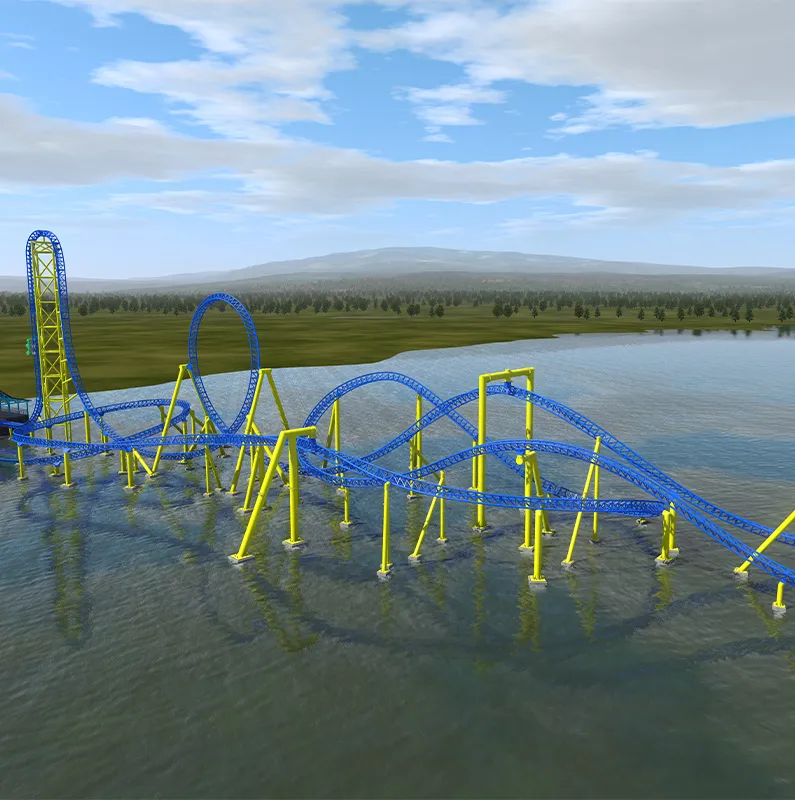- Albanian
- Arabic
- Belarusian
- Bengali
- Czech
- English
- French
- German
- Hebrew
- Hungarian
- Indonesian
- irish
- Italian
- Japanese
- kazakh
- Persian
- Russian
- Thai
- Uzbek
- Vietnamese
Prices for Amusement Park Rides and Attractions Equipment Explained
Understanding Amusement Park Equipment Prices
Amusement parks have long been a source of joy and excitement for people of all ages. From thrilling roller coasters to gentle carousel rides, each attraction requires a significant investment in equipment, maintenance, and safety standards. Understanding the prices associated with amusement park equipment can provide insights into the economics of running a successful amusement park.
Types of Amusement Park Equipment
The variety of equipment in amusement parks is vast, ranging from large rides like Ferris wheels and roller coasters to smaller attractions such as bumper cars and inflatable games. Each type of equipment has its pricing strategy, influenced by factors such as size, complexity, technology, and safety features.
1. Large Rides The cost of large rides varies widely based on design and capacity. For instance, a high-thrill roller coaster can range from $1 million to over $10 million. Factors like height, length, terrain complexity, and the materials used play significant roles in determining the price. Manufacturers often offer customization options that can further increase costs.
2. Moderate Attractions Attractions such as merry-go-rounds or Ferris wheels typically cost between $100,000 to $1 million, depending on their size and features. These attractions are generally more affordable to manufacture, but their ongoing maintenance costs can be substantial due to their frequent use.
3. Kid-Friendly Rides Smaller rides designed for young children, such as mini roller coasters or kiddie rides, are often priced between $10,000 to $50,000. Although more affordable, these rides must meet strict safety regulations to ensure the well-being of their young riders.
4. Game and Carnival Equipment Traditional game booths and inflatable bounce houses can range from $2,000 to $50,000. While these may appear inexpensive compared to larger rides, their profitability is often tied to the volume of visitors and the pricing of play options.
5. Water Attractions Water parks bring their own set of considerations. Water slides can range in price from $20,000 for smaller slides to over $1 million for complex, multi-story slides. Water attractions require additional investment in circulation and filtration systems, which adds to overall costs.
amusement park equipment prices

Factors Affecting Prices
Several interrelated factors contribute to the pricing of amusement park equipment
.1. Safety Standards Safety is paramount in amusement park equipment design and operation. Manufacturers must adhere to strict safety regulations, which can increase production costs significantly. Regular inspections and compliance measures are necessary to ensure the ongoing safety of rides.
2. Durability and Maintenance Equipment in amusement parks is subject to heavy wear and tear. Manufacturers often use durable materials to withstand constant traffic and extreme weather conditions. However, durable materials come at a higher initial cost, though they may reduce long-term maintenance expenses.
3. Technology Advancements in technology have transformed many rides, incorporating features such as virtual reality (VR) experiences and advanced queue management systems. While these innovations can improve the guest experience, they also increase the initial investment significantly.
4. Location The geographical location of an amusement park can also affect equipment prices. Parks in high-traffic tourist areas may demand higher prices for attractions due to the potential for increased footfall. Conversely, parks in less visited areas might need to keep prices lower to attract local visitors.
5. Customizations Many park operators seek to differentiate themselves from competitors by customizing their rides and attractions. Custom-designed equipment can quickly escalate cost due to the unique specifications and designs involved.
Conclusion
Understanding the pricing of amusement park equipment provides valuable insights into the operational aspects of amusement parks. The broad spectrum of attractions, from thrilling coasters to gentle rides for children, reflects the diversity of visitor preferences and experiences sought by park operators. Costs associated with safety regulations, durability, technology, and location are critical factors in the decision-making process for park investments. Ultimately, the colorful world of amusement parks is not just about the fun and excitement they offer; it is also a complex industry that balances entertainment with economic feasibility. Whether for thrill-seekers or families, the equipment behind the attractions generates memories that last a lifetime, justifying the considerable investment involved.
-
Flume Ride-Hebei Zhipao Amusement Equipment Manufacturing Co., Ltd.|Thrilling Water Attraction&NIST Safety StandardsAug.01,2025
-
Double Ferris Wheel Sale | Premium Custom RidesJul.31,2025
-
Flume Ride-Hebei Zhipao|Water-Based Attraction, Safety Standards, High-Speed DescentJul.31,2025
-
Flume Ride: Thrilling Water-Based Adventure & Advanced Engineering - Hebei ZhipaoJul.31,2025
-
Flume Ride-Hebei Zhipao Amusement Equipment Manufacturing Co., Ltd.|Thrilling Water Attraction&Customizable DesignJul.30,2025
-
Flume Ride - Hebei Zhipao Amusement Equipment | Water Coaster, Thrilling DescentJul.30,2025
